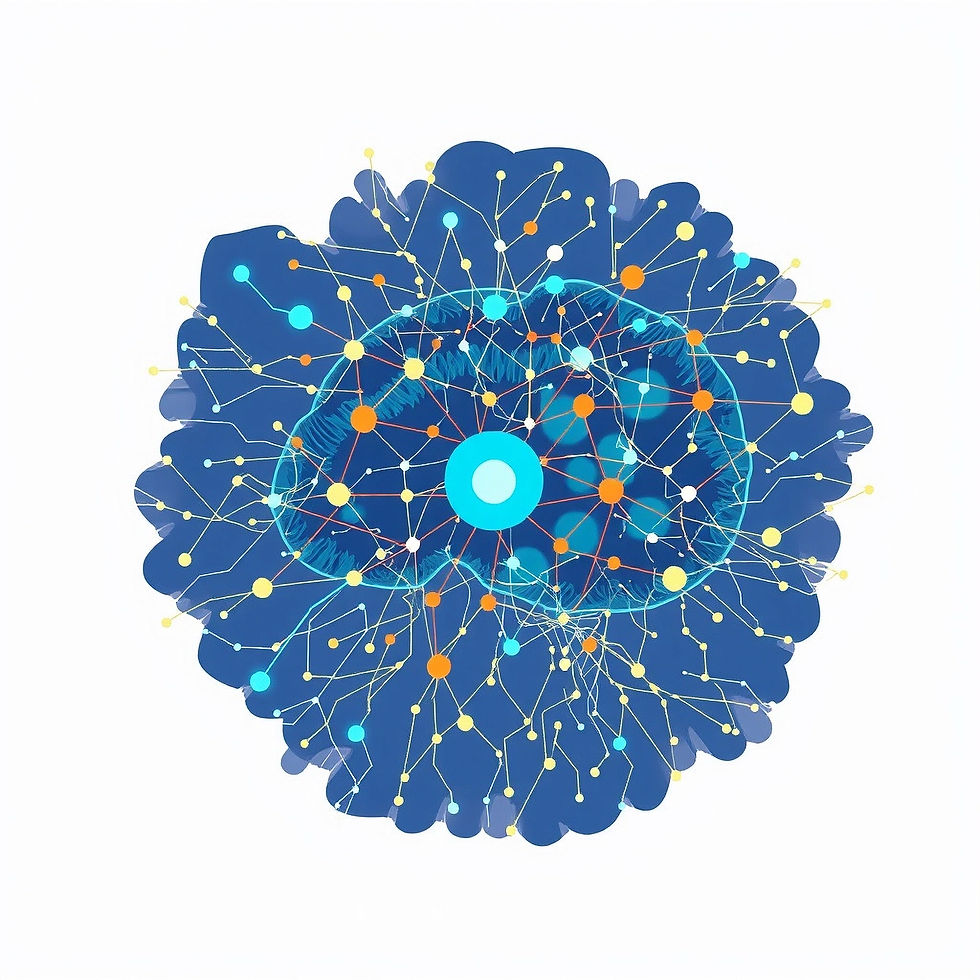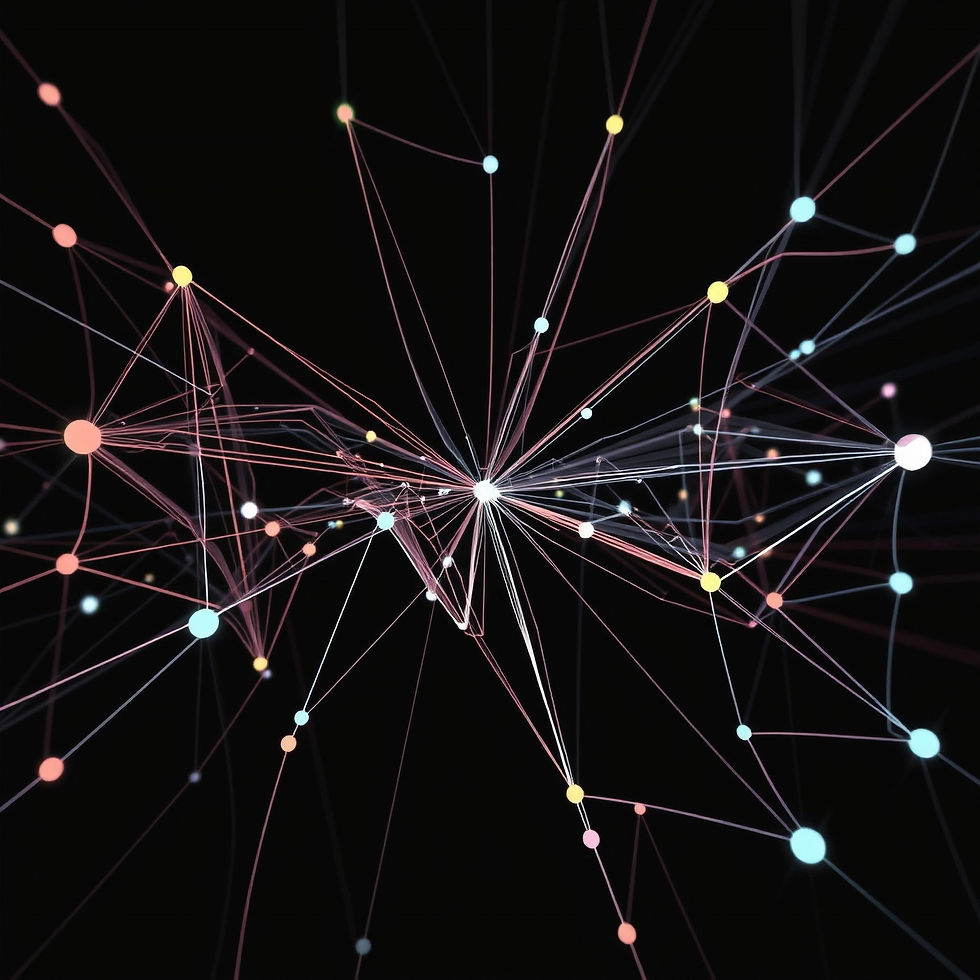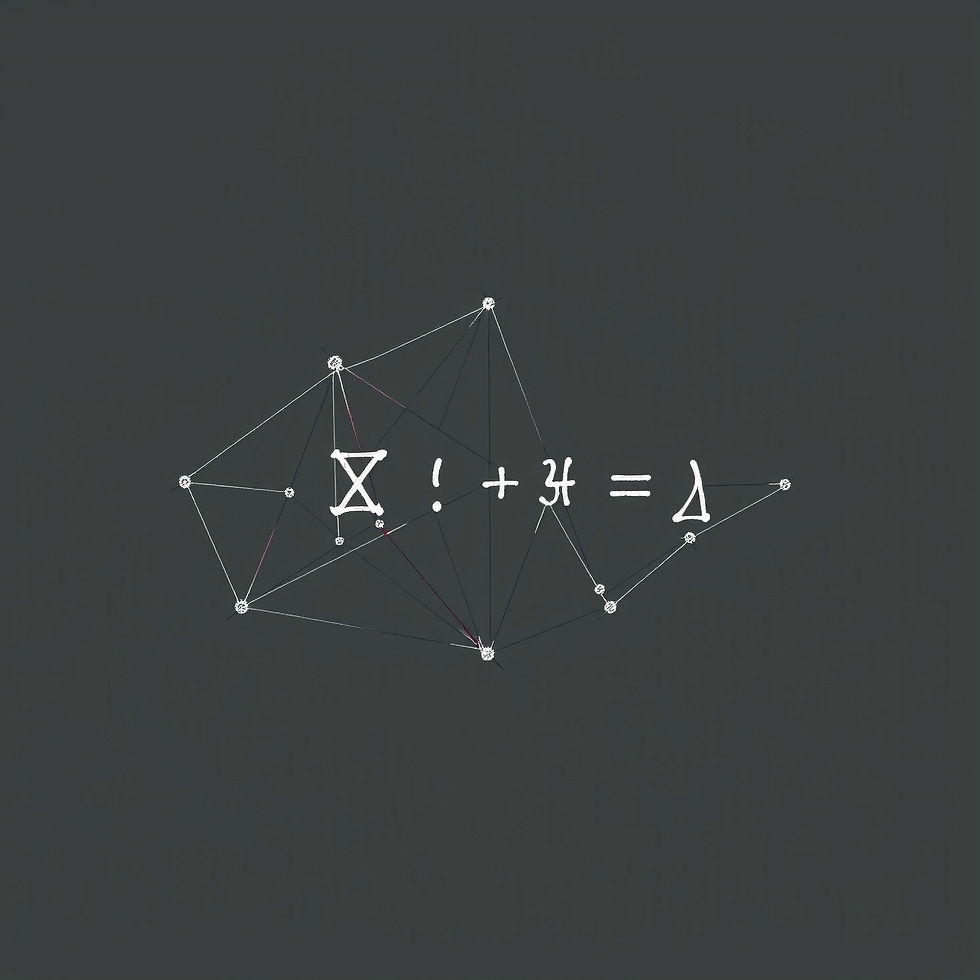Understanding Neural Network Architecture and Learning Processes Through Layer Visualizations
- Claude Paugh

- Aug 29
- 5 min read
Neural networks have transformed artificial intelligence (AI) by allowing machines to learn from data and predict outcomes with impressive accuracy. Whether you are a student, researcher, or professional, understanding how neural networks work is crucial. This blog post will explore various layers of a neural network, illustrate their functions, and provide examples of their applications, including how they manage information over time.

What is a Neural Network?
At its simplest, a neural network is a computational model mimicking how our brain processes information. It consists of interconnected nodes, known as neurons, arranged into layers. Each layer plays a specific role in converting input data into output predictions. The main goal is to learn from data by adjusting how neurons connect based on prediction errors.
Neural networks come in different types, such as:
Feedforward Networks: Used for standard tasks like classification.
information flows in a unidirectional manner, from the input layer through any hidden layers to the output layer, with no cycles or feedback loops
Convolutional Networks (CNNs): Specialized for image analysis.
uses specialized layers to identify patterns in grid-like data. CNNs excel at tasks like image recognition and object detection by learning hierarchies of features from low-level details like edges to complex structures like objects.
Recurrent Networks (RNNs): designed to handle sequential data, unlike traditional neural networks that process individual inputs independently. The key characteristic of an RNN is its ability to maintain an internal "memory" or "state" that allows it to learn from and utilize context from previous inputs when processing new ones within a sequence.
Architecture of Neural Networks
Input Layer
The input layer is where the data first enters the neural network. Each neuron in this layer typically represents a feature of the input data. For instance, in an image classification task where you classify handwritten digits from the MNIST dataset, each pixel of the image corresponds to a neuron in the input layer.

This layer does not perform any calculations; it simply prepares the data for the first hidden layer. The number of neurons here is determined by the total features of the input data. For example, an image of 28×28 pixels would have 784 neurons in the input layer.
Hidden Layers
Hidden layers are where most of the heavy lifting occurs. They are the intermediate layers between the input and output layers and transform the input data in meaningful ways.
A CNN, for instance, may have multiple convolutional and pooling layers that automate feature learning from an image.
The activation functions applied in these hidden layers, such as ReLU (Rectified Linear Unit) or sigmoid, introduce necessary non-linearity, enabling the model to learn complex patterns.
Research shows that CNNs can reduce error rates for image classification tasks by over 80% compared to traditional methods. Deeper networks can capture intricate relationships, but they also require more training data and computational power.
Output Layer
The output layer is where the model produces predictions. The number of neurons in this layer corresponds to the number of classes in classification tasks or just one neuron in regression scenarios.
For example, in a multi-class classification problem like classifying images of vehicles, if you have three categories—cars, trucks, and motorcycles—there will be three neurons in the output layer. The softmax activation function is often used here to produce probabilities, selecting the class with the highest score as the model's prediction.
Managing Time-Sequenced Information
Temporal storage is crucial for handling sequential data such as time series or language.

RNNs are uniquely suited for these tasks as they form cycles within their architecture, allowing them to retain previous information. For example, in natural language processing tasks like machine translation, RNNs can keep track of context from earlier words to influence how later words are interpreted.
However, training RNNs can be challenging. Studies indicate that over 90% of RNNs struggle with vanishing and exploding gradient problems, hindering their ability to learn long-range dependencies effectively.
Neural Network Learning Process
The learning process involves several steps: forward propagation, loss calculation, and backpropagation.
Forward Propagation

In forward propagation, input data moves through the network layer by layer. Each neuron calculates a weighted sum of its inputs, applies its activation function, and passes the results to the next layer. This continues until the output layer generates predictions.
Loss Calculation

Once predictions are generated, the loss needs to be calculated to gauge the difference between predictions and actual outcomes. Loss functions are essential for guiding the learning process. For instance, mean squared error is commonly used in regression problems, while categorical cross-entropy is typical for classification tasks.
Backpropagation
Backpropagation involves adjusting the weights of the network based on the calculated loss. It uses gradients to identify how much and in which direction to change the weights. Common optimization algorithms include:
Stochastic Gradient Descent (SGD)
minimizes a loss function, particularly in models with a large number of parameters and extensive datasets. It is a variant of the more general Gradient Descent algorithm.
Adam
stands for Adaptive Moment Estimation, It is an adaptive learning rate method that combines the benefits of two other optimization algorithms: Momentum and RMSprop
RMSprop
stands for Root Mean Squared Propagation, and it attempts to addresses the issue of diminishing learning rates in adaptive learning rate methods that can lead to premature stopping of the optimization process.
The learning rate, a hyperparameter, defines the step size for weight updates and is crucial for effective training. A learning rate that is too low may slow convergence while one that is too high can make the model volatile.
Training involves several epochs, with each epoch representing a full pass through the training dataset. Performance is assessed on a validation set, helping to prevent overfitting when the model performs well on training data but poorly on new data.
Applications of Neural Networks
Neural networks are versatile and can be applied in various fields. Here are a few scenarios:
Image Classification
CNNs excel in identifying objects in images. In 2021, a well-optimized CNN achieved an accuracy rate of over 99% on the CIFAR-10 dataset, showcasing their effectiveness. These networks consist of convolutional layers that learn features, pooling layers that reduce dimensionality, and fully connected layers that finalize predictions.
Natural Language Processing
Neural networks are critical in NLP for tasks such as sentiment analysis and machine translation. RNNs and LSTMs are common due to their ability to process sequential data efficiently. For example, Google Translate employs NLP models that have improved translation accuracy by over 20% since the integration of neural networks.
Time Series Forecasting
Predicting future values based on historical data is another area where neural networks shine. RNNs and LSTMs are particularly effective, as they learn from past observations to forecast future trends. For instance, companies like Netflix use these approaches to predict viewer preferences based on past watching patterns, optimizing content recommendations.
In the finance sector, neural networks help analysts achieve accurate stock price predictions, enabling informed investment decisions.
Final Thoughts
Understanding the architecture and learning processes of neural networks is vital for leveraging their potential. By breaking down the components, we can see how they convert data into actionable insights.
The learning process, driven by forward propagation, loss calculation, and backpropagation, allows these networks to adapt and improve. From image classification and natural language processing to time series forecasting, neural networks are revolutionizing AI applications.
As technology evolves, the opportunities for neural networks will expand, making it essential for your growth in this era of artificial intelligence. Stay informed, and you'll unlock new possibilities in AI innovation, pushing the limits of what machines can accomplish.

